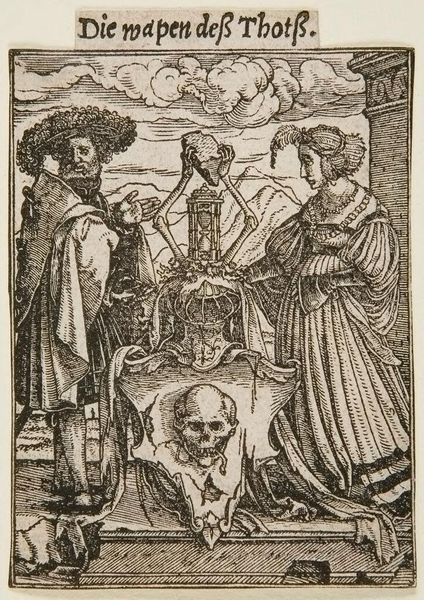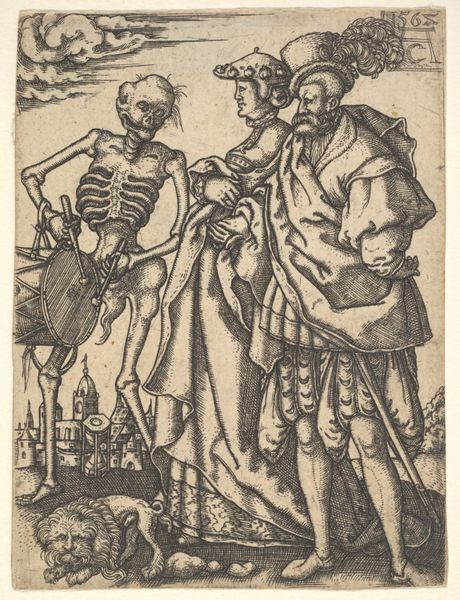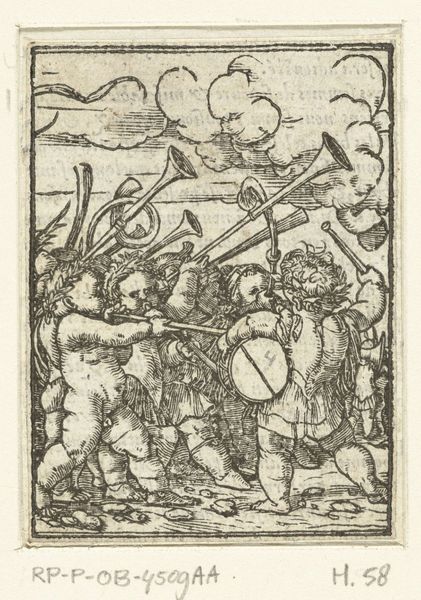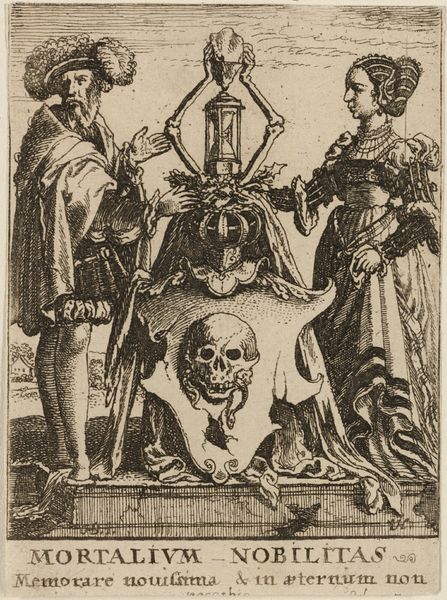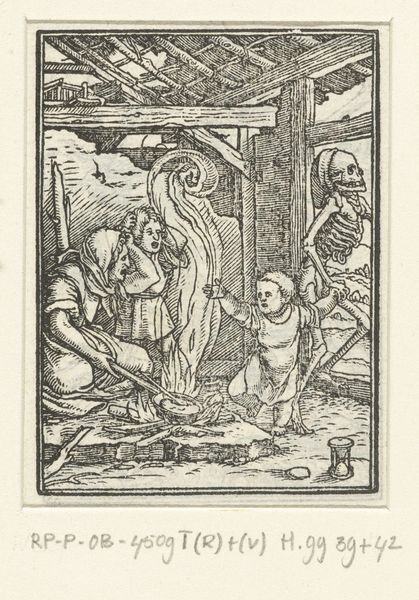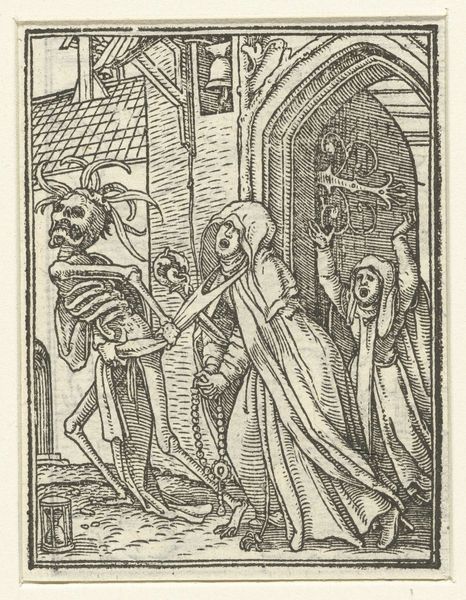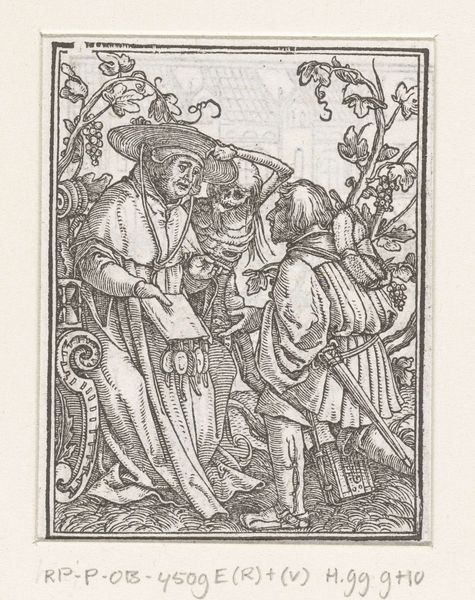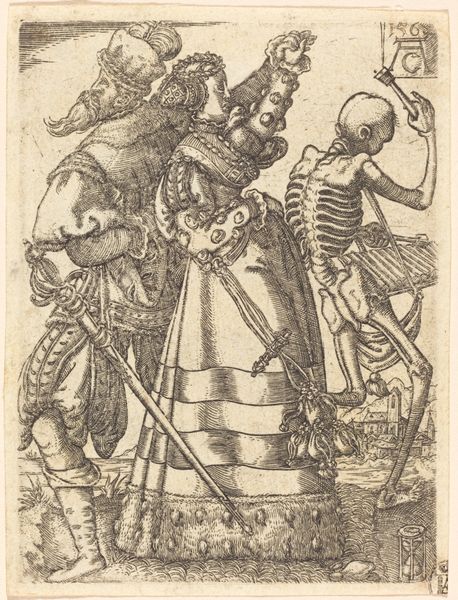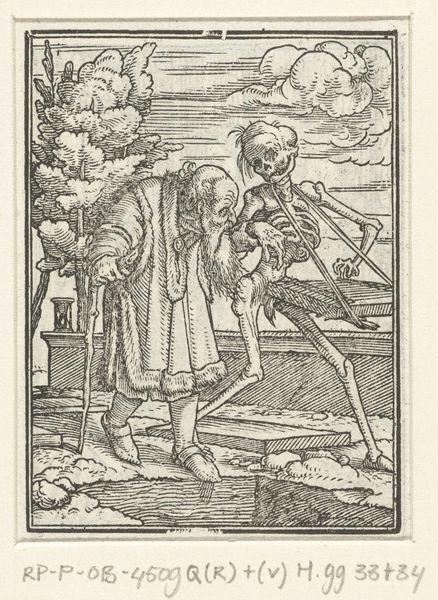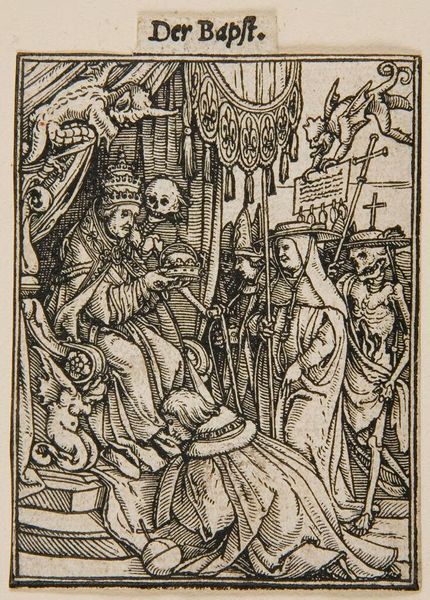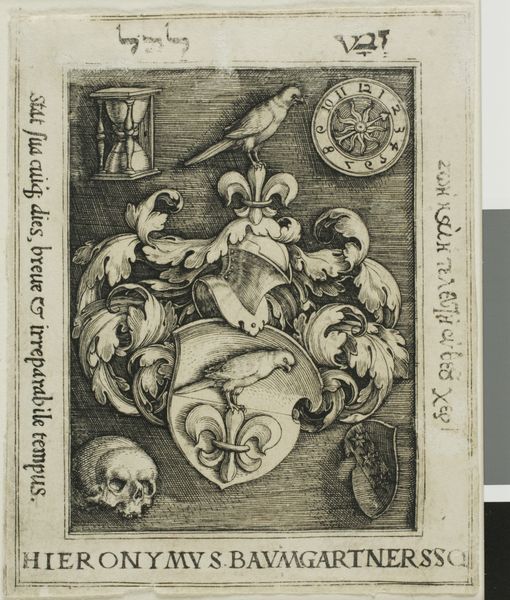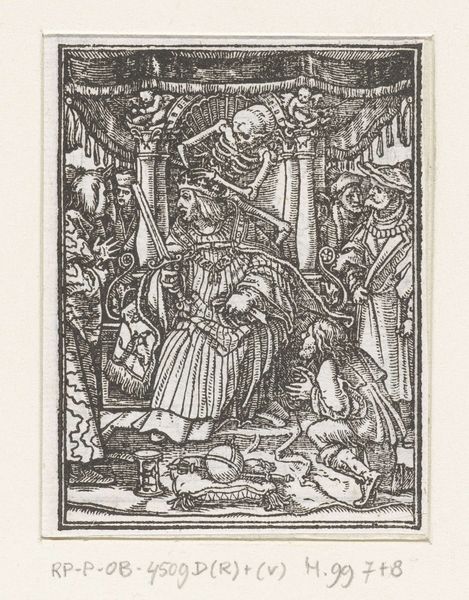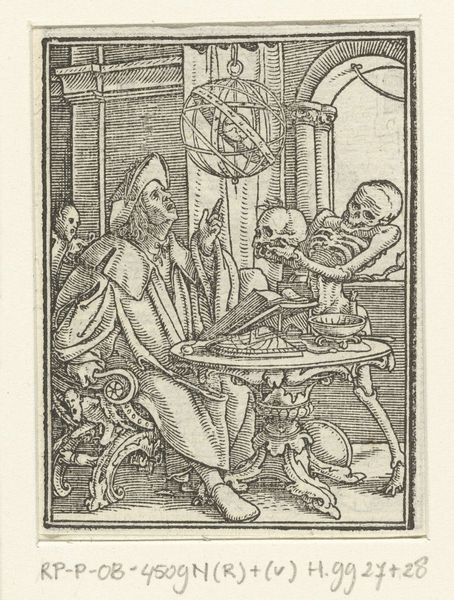
drawing, print, ink, woodcut, pen
#
drawing
#
medieval
#
allegory
#
narrative-art
#
pen drawing
# print
#
figuration
#
vanitas
#
ink
#
momento-mori
#
woodcut
#
line
#
pen
#
history-painting
#
northern-renaissance
Dimensions: height 65 mm, width 50 mm
Copyright: Rijks Museum: Open Domain
This engraving of the Coat of Arms of Death, flanked by a man and woman, was made by Hans Holbein the Younger. It is a miniature world rendered with astonishing intricacy. Holbein was a master of the woodcut, a relief printing technique. The artist would have used specialized tools to carve away the areas of a block of wood that he didn't want to print, leaving the design raised. Ink was then applied to the surface and the image transferred to paper, in the same way a rubber stamp works. Look closely, and you can see the accumulation of tiny, precise cuts that define the forms. The sharp lines give the image a graphic punch, emphasizing the stark contrast between life and death. This print wasn't just an aesthetic object, it was a product of skilled labor, and speaks to the cultural context of the time, where death was an ever-present reality. Understanding the process and the materials allows us to appreciate the skill involved and the image’s cultural impact.
Comments
No comments
Be the first to comment and join the conversation on the ultimate creative platform.
